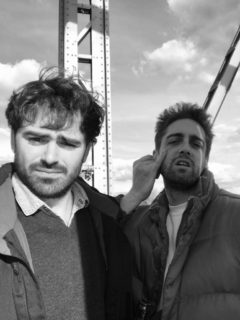FOR SOME TIME NOW, THE SUCCESSFUL PROLIFERATION OF COMMERCIAL PRODUCTS THAT INCLUDE CANNABIS HAS BEEN EXPONENTIAL. THE ACHIEVEMENTS CONQUERED IN THE LAST TWENTY TO THIRTY YEARS IN THE FIELD OF MEDICINE HAVE INSPIRED A NEW IMAGE OF CANNABIS USERS AROUND THE WORLD. HEMP IS NOT ONLY SOMETHING STONERS OR HIPPIES ENJOY, THANK GOD, BUT IS SLOWLY SEEN FOR ITS GREAT MEDICAL POTENTIAL. THE RESULTS OF A LONG STRUGGLE IN FAVOR OF CLINICAL RESEARCH WITH CANNABIS HAS STUNNED CONVINCED AND SKEPTICAL ALIKE, BUT WHO’S LINING THEIR POCKETS WITHIN THIS NEWLY BORN INDUSTRY AND TO WHOM ARE THESE PRODUCTS INTENDED FOR ARE MORE THAN CONVENIENT QUESTIONS. FURTHERMORE, ISN’T THE CULTIVATION AND CONSUMPTION OF CANNABIS ILLEGAL? REMEMBER FOLKS, 420 ALSO MEANS HEALTH.
WORDS: JAVIER SÁNCHEZ, JOAQUÍN ROBLES SALSO

Since ancient times the plant was highly regarded for its pharmaceutical properties, which were already known in its place of origin. Before the modern pharmaceutical industry was born there were plenty of plant-based medicines available in the western countries. Cultivation and usage of cannabis can be traced back to the third millennium BC, a fact which might even surprise some experienced potheads. There is also clear archeological evidence that suggest that the first crops of hemp could be dated back to 5.000 BC. This fact suggest it might be one of the first vegetable crops in the history of mankind, alongside cocoa or wheat. Even written historic evidence shows how the plant was cultivated in China and the Japanese islands for its fibers, used to produce clothing and footwear; but also as a medicine. It was allegedly used in various religious and social rituals, rites of passage to adulthood and such social rituals. I would’ve done my first communion if that had implied gettin’ high with my family and friends, something not very acceptable for the narrow catholic moral of Spain.
The transformation of the plant into vegetable fiber was the main use of the crop, as already said, but it also produced a secondary product which made a surprisingly fast world-tour causing intrigue and admiration: its resin. Hashish was the main format of consuming the plant due to the way it was obtained: as a secondary product resulting of the manufacture of vegetable fiber. Although, there were already people cultivating the plant for its medicinal properties then, as it will be shown further on. Many were the users of the plant with such a goal, for example, a fairly recent example would be Queen Victoria, who treated her PMS with a cannabis tincture prescribed by her Royal Physician, God save the Queen!

But traveling further on in history, in 1985 and during the years when Ronald Reagan was intensifying his policies on the so-called War on Drugs, one David Watson, also known as Sam The Skunkman, decided to leave his country for Amsterdam, where he landed with a handful of cannabis seeds with the aim of joining other cannabis growers in Europe to develop high-potency strains. He is credited with introducing the famous Skunk strain into Europe – a hybrid strain of Afghan Indica, Mexican Sativa and Colombian Gold Sativa. Nowadays, the term Skunk isn’t used anymore to refer to any particular strain, but instead it refers to high-potency types of cannabis, strains which contain a high percentage of THC. In relation to this it is very interesting to observe how the percentages of THC have increased exponentially since the 1970s. We find ourselves today in a time when is easy to find varieties that exceed 10% (the percentage naturally found in cannabis), something that was unthinkable at the time. These varieties with such high THC percentages are associated with the development of various psychiatric disorders.
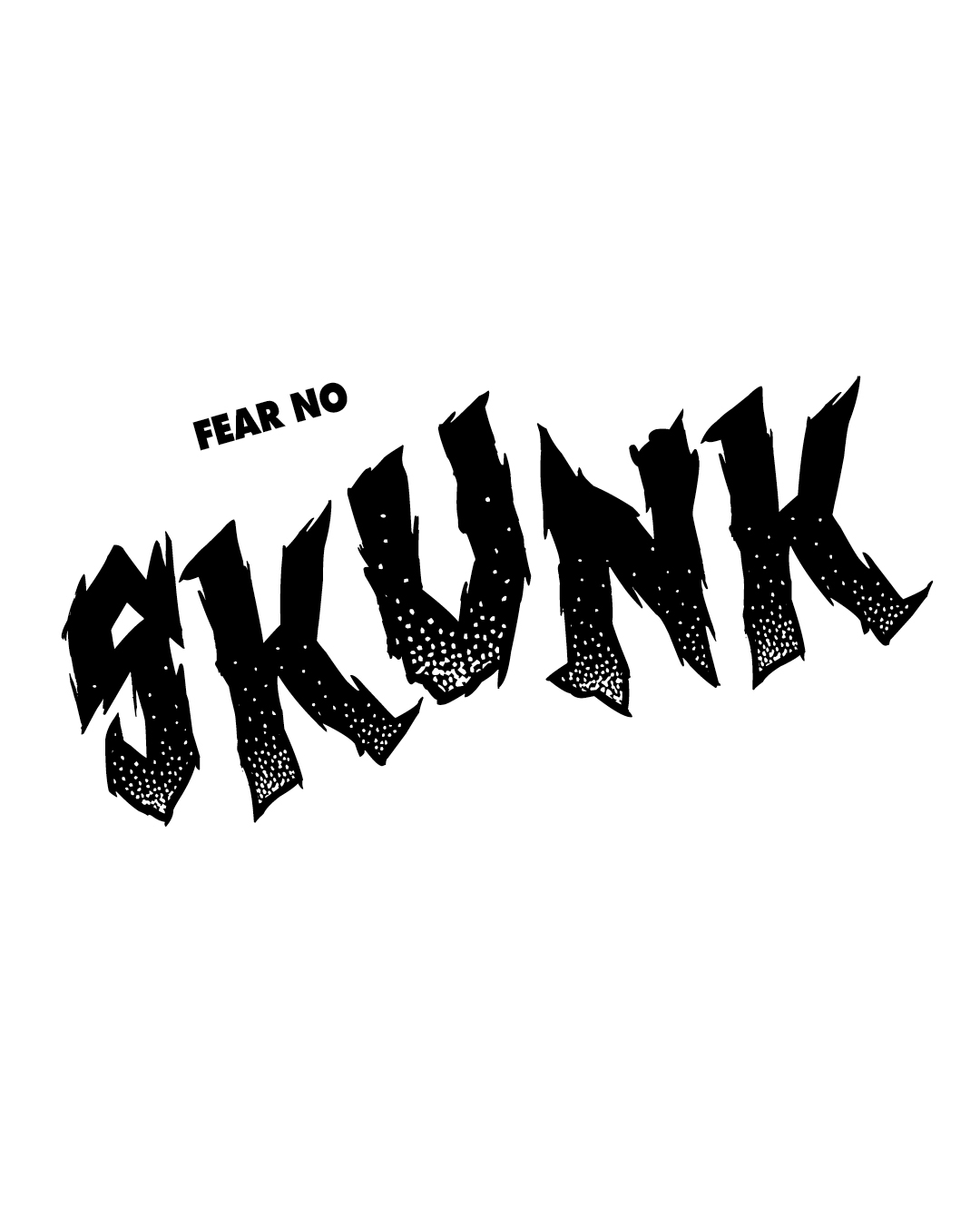
So, yes, they were correctly concerned about a health issue, but numbers don’t really show that. Cannabis was scheduled then as a dangerous substance with no recognized medical use during that time. That meant that Cannabis was, on the eyes of the law, just as dangerous as heroin or cocaine, users were persecuted and criminalized. Cannabis is still scheduled Class I substance. Reagan wasn’t concerned about the psychosis, but more concern with the social effects the use of the pejorative marihuana could cause in the American middle class of that time. That is how the smuggling of cannabis became a really very profitable business in the black market.
Since then, the legal situation of cannabis hasn’t really changed much. In Europe for the last thirty to forty years the availability of products containing cannabis has grown in several areas. Today, different internet providers offer us anything from food supplements to cosmetic products and even lube containing high percentages of cannabinoids. The market continues to act in a completely outdated way, moving between the popular and historical wisdom around the cannabis plant and the medical knowledge that is developed in the field of clinical research, looking for medical applications that could help thousands of people to deal with physical and psychological ailments. What is actually going on?
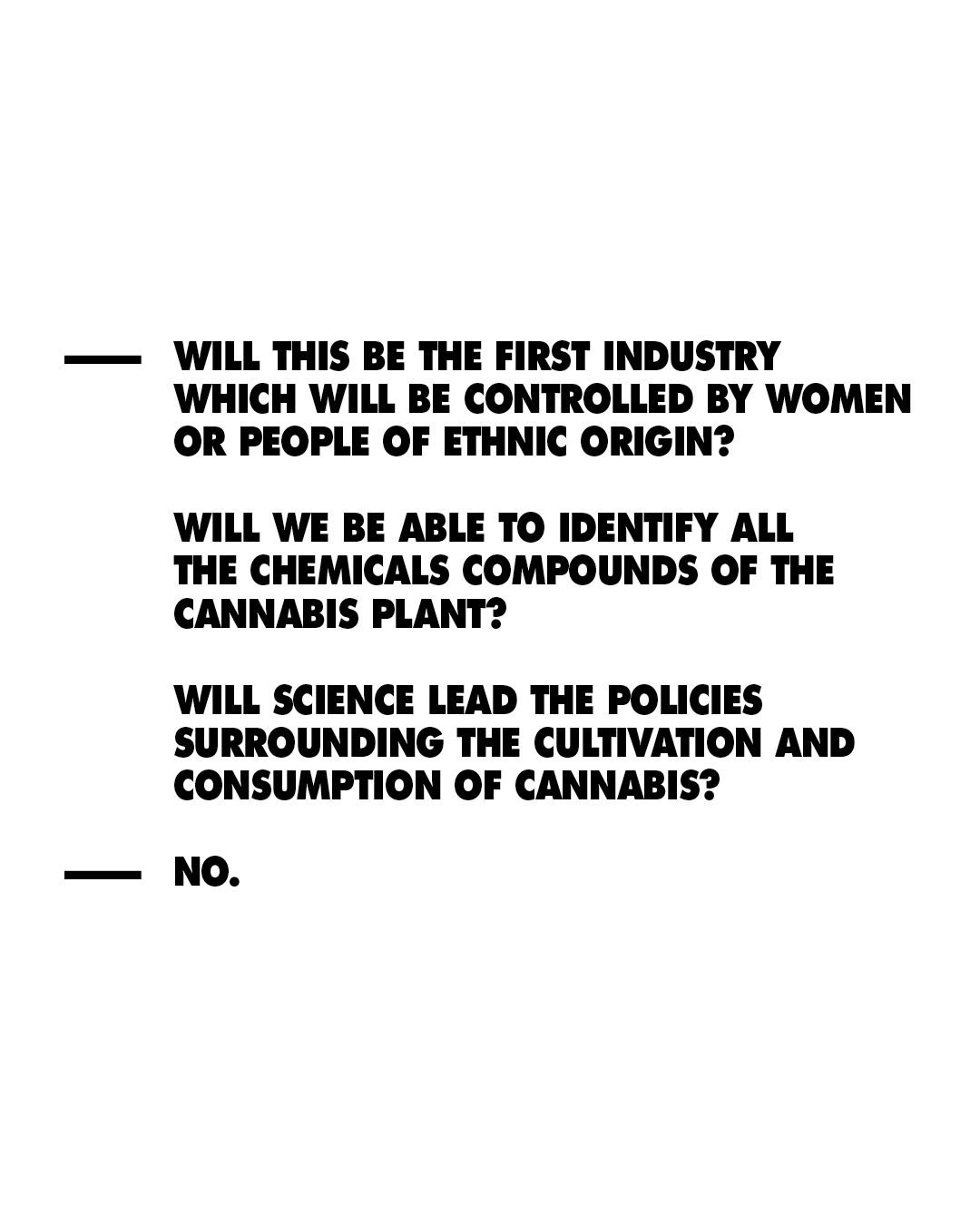
While at the turn of the past decade medical use of cannabis was opening the door to a new industry, an industry expected to gross about 74 billion USD by 2027. Many questions were put onto the table: will this be the first industry which will be controlled by women or people of ethnic origin? Will we be able to identify all the chemicals compounds of the cannabis plant? Will the science lead the policies surrounding the cultivation and consumption of cannabis? Questions which nowadays we do have an answer for: no. Again the main actors in this industry are from a very specific background, and yes all of them are white males. And the conflict of interest surrounding the pharmaceutical industry is slowing down the process of identifying its components. The biggest risk in this industry is when it isn’t put to work in order to satisfy the medical necessities of people, but the market itself. Many are the countries which have put in place strong prohibition also in the clinical investigation. Whenever cannabis is just seen as another commodity where economic profit can be drown out of it then we lose the perspective that was already there in the beginning of its use as medicine and it can become a risk for public health. Different studies regarding the cannabis market in the American state of California show how only about 16% of cannabis products do have a correct identification on their origin or on how they were grown, if they contain pesticides and the exact percentages of cannabinoids in the product. Are then customers able to strike a right decision regarding the dosage in terms of the medicinal use, are customers able to choose the right strain in their recreational use? Why is the pharmaceutical industry more interested on supplying you with drugs known to cause great addiction than investigating the possible applications of cannabis in the field of medicine, a substance with surprisingly low rates of physical addiction or even non-existent? It has come to a point where private consumers must lead the fight against this wave of disinformation, against the spread of inaccurate information and against the negative stereotypes surrounding hemp.
How can we understand the scientific and public perceptions of cannabis and how do they intersect with its patterns of use? How will we ever be able to identify the strains which help with specific patients and conditions if we’re not able to carry out a proper medical and clinical investigation? What happens then with all the skeptics out there which aren’t sure that the medicinal properties of cannabis could ever outweigh the social danger of the drug? Canada could be to date the best example of policies following the general interest and public health in the regularization and legalization of cannabis. Quebec was already one of the places on Earth with the highest rates of consumption before regularization arrived and if we don’t judge the actual situation by the numbers, but upon the philosophy this nation-wide regularization and legalization was built upon. We can see now, that we’re now at the beginning of a social and political reinterpretation of hemp.
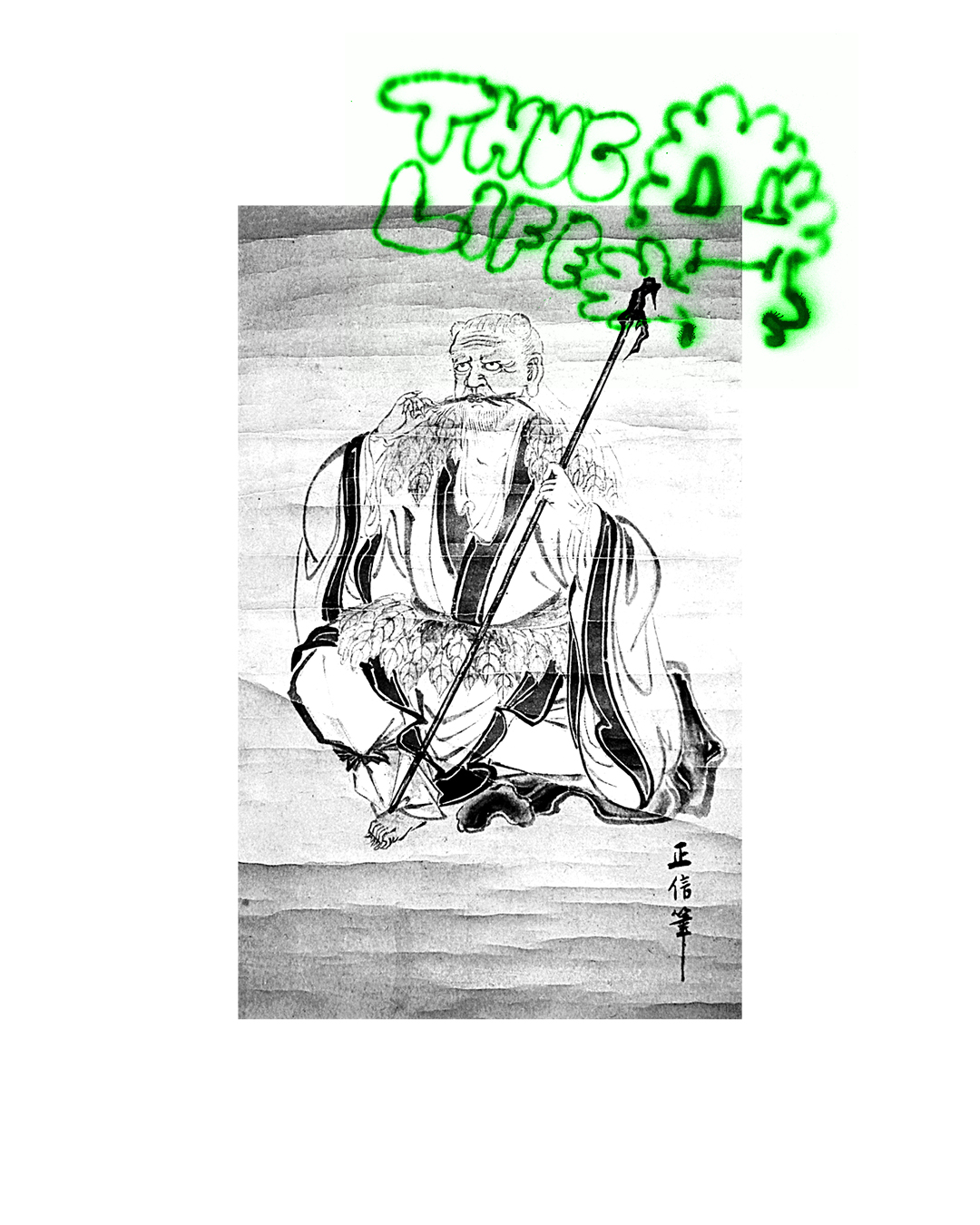
Remember, the first documented medical use of cannabis dates back some 5,000 years, when the Chinese Emperor SHENNONG wrote the first Chinese pharmacopoeia. That text recommended the use of cannabis for the treatment of fatigue, rheumatism or malaria. Today, different indigenous communities from Africa or the East still use it as part of their traditional medicine. For them cannabis is considered a very versatile medicine, used for an almost endless number of things (insomnia, dysentery, leprosy, dandruff, eye diseases, venereal diseases, headaches, whooping cough and even tuberculosis). It’s is also considered a brain tonic, anti-hysterical, anti-depressant, sexual desire enhancer, source of courage and longevity.
The pharmacological study of cannabis began in the 1960s when the main phytocannabinoid, the cannabinoids present in the hemp plant, the infamous D9-THC or plainly THC, was identified. This was followed by research in the pharmaceutical industry, which in the 1980’s worked on the development of synthetic cannabinoids which led scientist to discover similar substances present in the body (the so-called endocannabinoids). In the mid 1990’s a group of researches described this constellation of substances and receptors in the human body as the Endocannabinoid Sytem or ECS (common to all mamals). This system is responsible for the regulation of various biological functions, such us appetite, sleep or the feeling of pain or anxiety. This fairly recent discovery has also shown that the human body produces similar substances to the ones found in cannabis to manage this functions. There are receptors for this substances all over the human body. The ECS is also involved in conditions including metabolic and inflammatory pathologies. The proper clinical investigation would allow us to finally identify the different strains of cannabis, all of its chemical components, and how these act upon our ECS and how can it help in the medical treatment of various physical and psychical conditions. For example, there is substantial evidence that cannabis is effective for the treatment of chronic pain, in the treatment of chemotherapy-induced nausea or vomiting and for improving some symptoms associated with Multiple Sclerosis. There are a bunch of other conditions in which cannabis have been suggested as possible adjunctive treatment like Alzheimer’s Disease, Anxiety Disorders or PTSD but more research is needed. Finally, in 2018 for the first time at a federal level in the USA, the Food and Drug Administration (FDA) authorized the use of one of the most famous compounds of hemp: CBD, to treat two rare and severe forms of epilepsy.
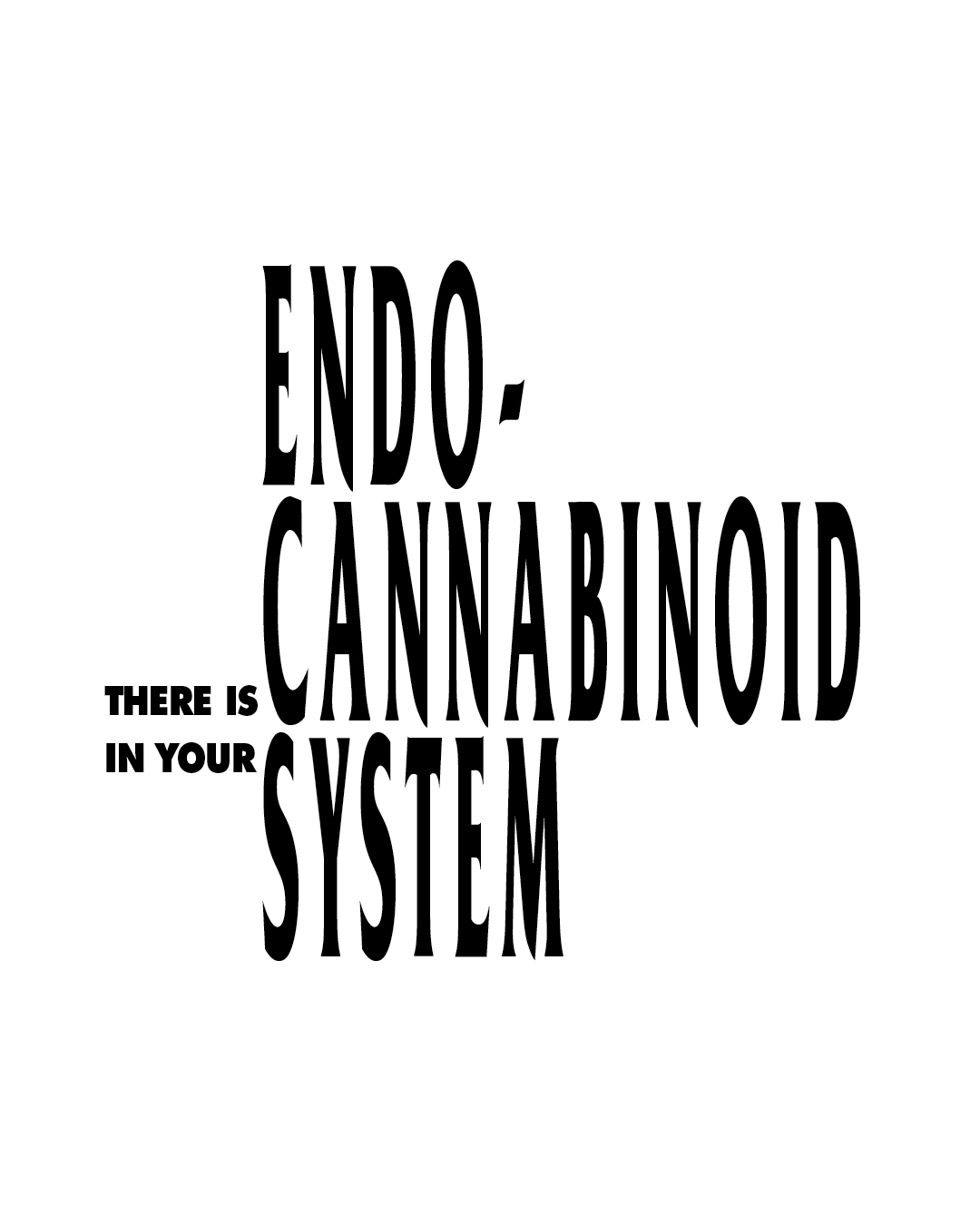
While there is a strong correlation between the use of cannabis strains with a high percentage of THC and psychotic disorders, as shown by several clinical studies in the field of Psychiatry, the cannabis industry runs these products with high THC percentages in very specific places, we’ll come back to this again. The relationship between cannabis use and schizophrenia and other psychoses has been discussed endlessly in the field of medical psychiatry. A recent study conducted in different European cities and developed with the aim of identifying consumption patterns in different places and segments of the society and the possibilities of developing psychosis shows how those daily users of high-potency cannabis, strains contenting percentages of THC over 10%, were almost five times more likely to have a psychotic disorder than those who had never used. The same study describes how up to 30% in London or 50% in Amsterdam of the first-episode psychosis could have been avoided if high-potency cannabis wasn’t so broadly available. Also, in relation to the results of this study some journalist have pointed out how in the USA high-potency cannabis is widely available in low-income neighborhoods in comparison with others with higher income rates. It is striking from this perspective how a percentage of THC greater than 10% is still considered to be high potency, as it is now rare to find strains with less than 20% in any Californian dispensary.
Despite the hype, we are returning to a situation where the market favors uninformed consumption to the detriment of generating an informed consumer base. Responsible consumption thus seems to exist under regulated models in favor of the good and the general interest as is the case in Canada, where the negative stereotypes overfly the recreational use of cannabis in favor of medical applications. Although an estimated 75% of consumers still get their products from the black market in Canada, due to the shortage of dispensaries. In Ontario, for example, a city of about 14 million people there are only 24 dispensaries across the whole province. That’s one dispensary every 45.000 squared kilometers, or one for every 600.000 inhabitants. Not quite a good rate.
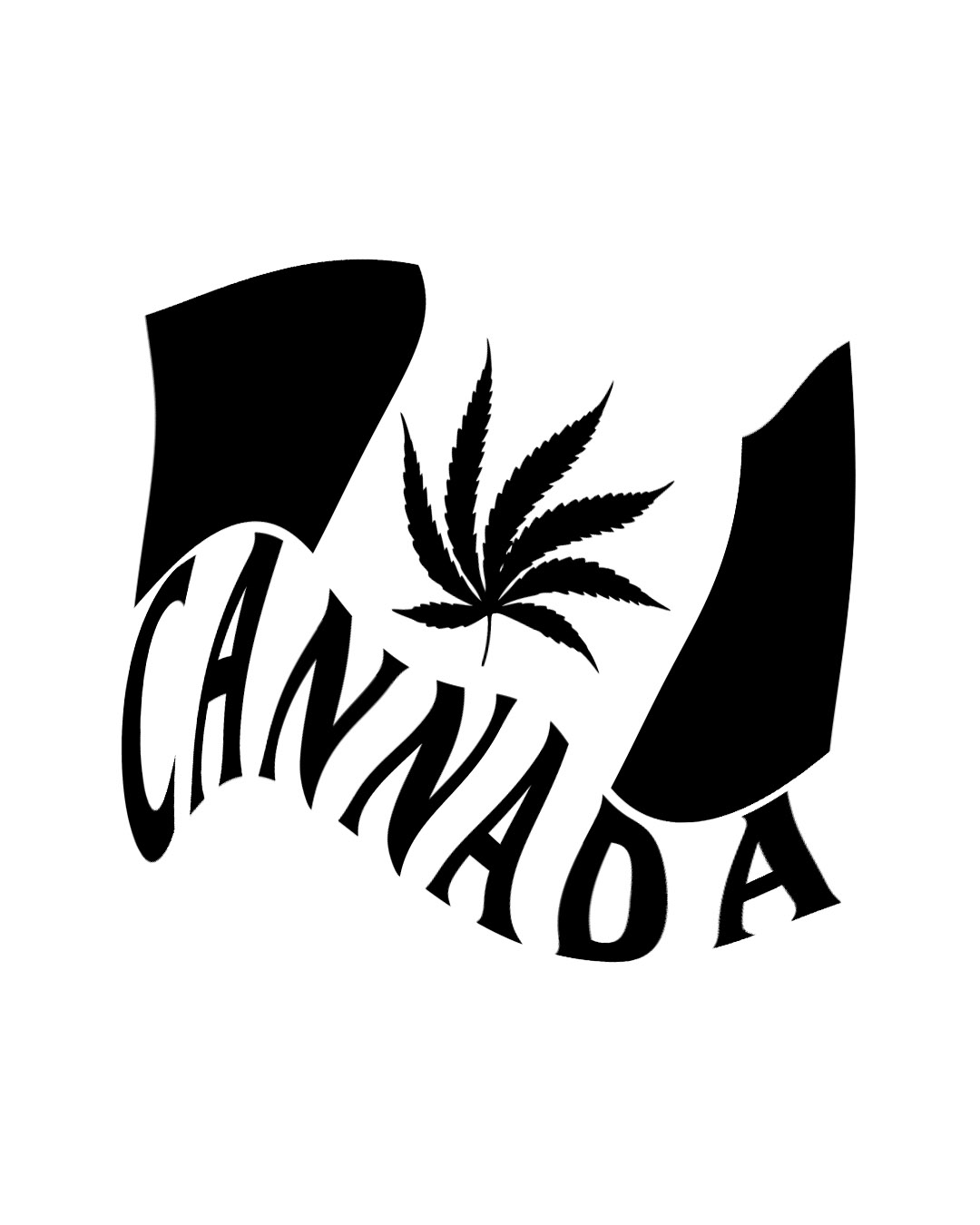
In any case, it is well known that the vast majority of users will not develop a psychosis. Still, studies of this type bring up a dilemma regarding increasing legalization, availability and consumption; and will have to be accompanied by greater control by governments and investment in education programs about the substances abuse under real information a not urban mythology.
It seems absurd to accept that the negative stereotypes that the usage of the cannabis plant still has in the majority of the population is derived from its psychoactive effects, since other socially accepted substances such as alcohol are causally associated with tremendous risks to physical and mental health, while the causal relation of cannabis hasn’t been proved jet, although there is a strong correlation between the use of high-potency strains and the development of psychotic disorders. Don’t misinterpret these words, this isn’t a stand against any use of cannabis, but an advocacy for a better and well-informed use of a plant (period).
The stigma around the plant and its consumption, still rooted very deep in our western culture, block and hinder its medical and clinical research. With the legalization of consumption in different parts of the world (some of them with a great impact and influence on the prevailing values in the West) a door is opened to the development of new uses for cannabis. An absurd situation if looked upon the behavior of the market in this issue. Many medical dispensaries in the USA can’t properly provide valuable information to patients in need of medicinal cannabis, people who aren’t able to identify the proper botanical variety which helps them decreasing nausea related to chemotherapy, for example. The same goes for recreational cannabis. Widely available and without the right information could result in fatal use of the plant from a psychiatric perspective.
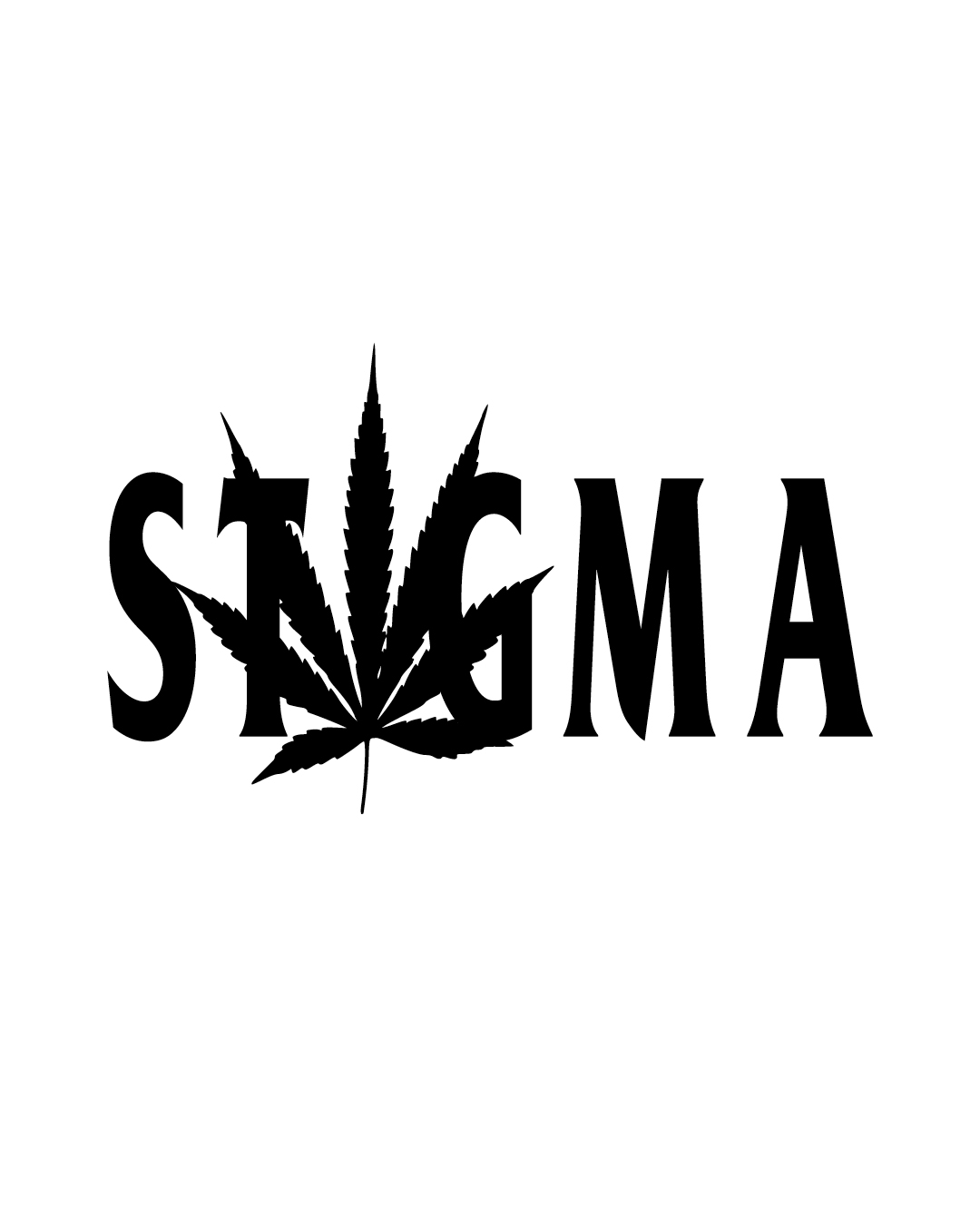
As it has already happened with other goods, or consumption hypes, the market favors accelerated and ill-informed consumerism. The pharmacological industry is more interested in pushing fentanyl prescriptions as in investigation the medicinal powers of cannabis, and governments in the western hemisphere still view the substance under serious racist perspectives which hinders the development of this clinical investigation and criminalizes its users.
ON THE AUTHORS
For Javier Sánchez and Joaquín Robles Salso planets first aligned back in 2012 when they met as Erasmus students in Freiburg (Germany). Cannabis came to solidify a bond built upon shared interest in music and film, but also in the realm of sessions where everything is made more enjoyable. Discussing the ethical consumption of psychoactive substances has always had a recurrent presence. So they kept in contact while finishing their degrees on Medicine and Philosophy back in Spain respectively. Javier focuses part of his work as a psychiatry research resident studying the effects and clinical repercussions of psychoactive substances on psychiatric disorders. Joaquín has done critical philosophical research in the field of aesthetics and free market and is interested in analyzing diverse active artistic scenes. Both live and work in Madrid.

